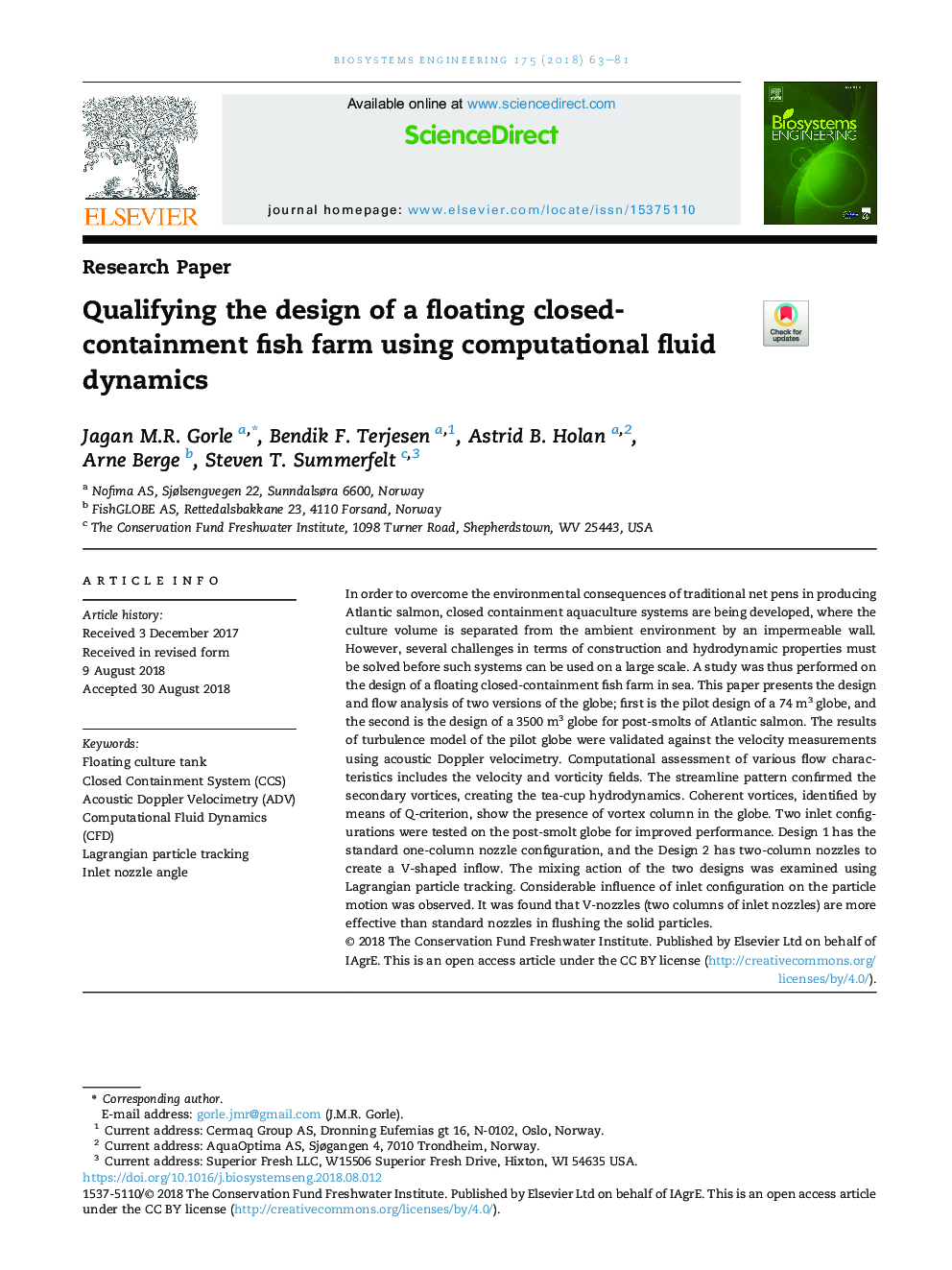| Article ID | Journal | Published Year | Pages | File Type |
|---|---|---|---|---|
| 10147753 | Biosystems Engineering | 2018 | 19 Pages |
Abstract
In order to overcome the environmental consequences of traditional net pens in producing Atlantic salmon, closed containment aquaculture systems are being developed, where the culture volume is separated from the ambient environment by an impermeable wall. However, several challenges in terms of construction and hydrodynamic properties must be solved before such systems can be used on a large scale. A study was thus performed on the design of a floating closed-containment fish farm in sea. This paper presents the design and flow analysis of two versions of the globe; first is the pilot design of a 74Â m3 globe, and the second is the design of a 3500Â m3 globe for post-smolts of Atlantic salmon. The results of turbulence model of the pilot globe were validated against the velocity measurements using acoustic Doppler velocimetry. Computational assessment of various flow characteristics includes the velocity and vorticity fields. The streamline pattern confirmed the secondary vortices, creating the tea-cup hydrodynamics. Coherent vortices, identified by means of Q-criterion, show the presence of vortex column in the globe. Two inlet configurations were tested on the post-smolt globe for improved performance. Design 1 has the standard one-column nozzle configuration, and the Design 2 has two-column nozzles to create a V-shaped inflow. The mixing action of the two designs was examined using Lagrangian particle tracking. Considerable influence of inlet configuration on the particle motion was observed. It was found that V-nozzles (two columns of inlet nozzles) are more effective than standard nozzles in flushing the solid particles.
Keywords
Related Topics
Physical Sciences and Engineering
Engineering
Control and Systems Engineering
Authors
Jagan M.R. Gorle, Bendik F. Terjesen, Astrid B. Holan, Arne Berge, Steven T. Summerfelt,
